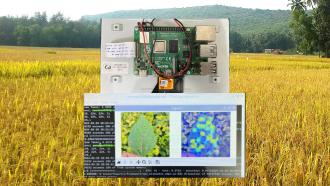Successful in its experimental extended range weather forecasts (for up to 20 days), the Monsoon Mission launched by the Ministry of Earth Sciences is all set to extend its facilities for disaster management. This programme is aimed to help the farming sector in deciding agricultural operations and water reservoir management.
“Monsoon Mission is essentially a research and development programme. The objective of this initiative is to improve monsoon forecasts at all scales viz. from seasonal (i.e. June-September average), extended range (up to 20 days) and short range (3 days). Forecasting of events like heat waves and cold waves and extreme weather events are also envisaged”, said Prof. Ravi Nanjundiah, Director, Indian Institute of Tropical Meteorology (IITM) and Professor at the Indian Institute of Science.
Ministry officials said under the ‘Monsoon Mission’ programme, the ministry implemented two state-of-the-art dynamical prediction systems for short range to medium, extended range and seasonal forecasts. Many major improvements have been made to collect data from satellites and weather radar across the country to be input to forecasting models. All these initiatives have helped to improve the skill of monsoon forecasts over the country.
“Seasonal forecasts are valuable for policymakers. If information about the behaviour of monsoon is available with a lead time of a few months, then the government can take necessary steps depending on the kind of forecasts”, explained Prof. Nanjundiah. “Extended range forecasts will indicate if the monsoon is in active phase or likely to go into inactive phase with a lead time of about two weeks. This will be useful for farming operations and also for reservoir management including release of water for irrigation if necessary. Short range forecasts are useful for assessing the occurrence of extreme weather events”, he added.
For the first time, the India Meteorological Department (IMD) used the Monsoon Mission dynamical model to prepare operational seasonal forecast of 2017 monsoon rainfall over India. “The high rainfall events during the 2017 monsoon were predicted with a good degree of accuracy with a lead period of about 3 days by IMD, using the forecasting system developed under the first phase of Monsoon Mission”, said Prof. Nanjundiah, talking about the success.
The officials said that with these facilities, the Ministry was now capable of generating monsoon forecasts on all time scales, short range to seasonal. The experimental range initiated by the Ministry were useful and will be further extended for disaster management, they said. “Disaster management agencies need operational forecasts which will be issued by organizations such as the IMD, based on the forecasting suite developed under the Monsoon Mission project”, added Prof. Nanjundiah.
Accurate prediction of monsoon rainfall is crucial as it impacts many sectors like agriculture, water resources, power generation, transport and even the economy. The Monsoon Mission was launched in 2012 with an allocation of Rs.400 crores to develop the capability of dynamical model prediction system for short range to seasonal forecasts during the Monsoon season.
So what can the country, heavily dependent on monsoon, expect in the future? “We can definitely expect better quality of monsoon forecasts -- a challenge for any forecasting system since monsoon is a very complex phenomena involving ocean, atmosphere and land. In addition, from a research point of view, this programme will also develop an ecosystem in academia and research institutions for further conducting cutting-edge research on this vital topic”, signed off Prof. Nanjundiah.






